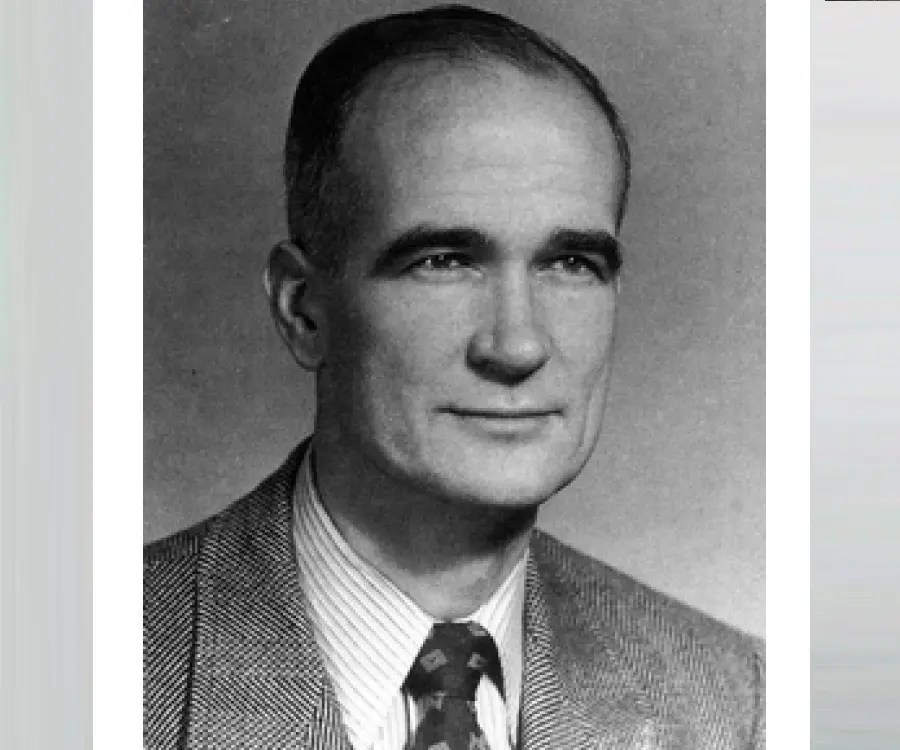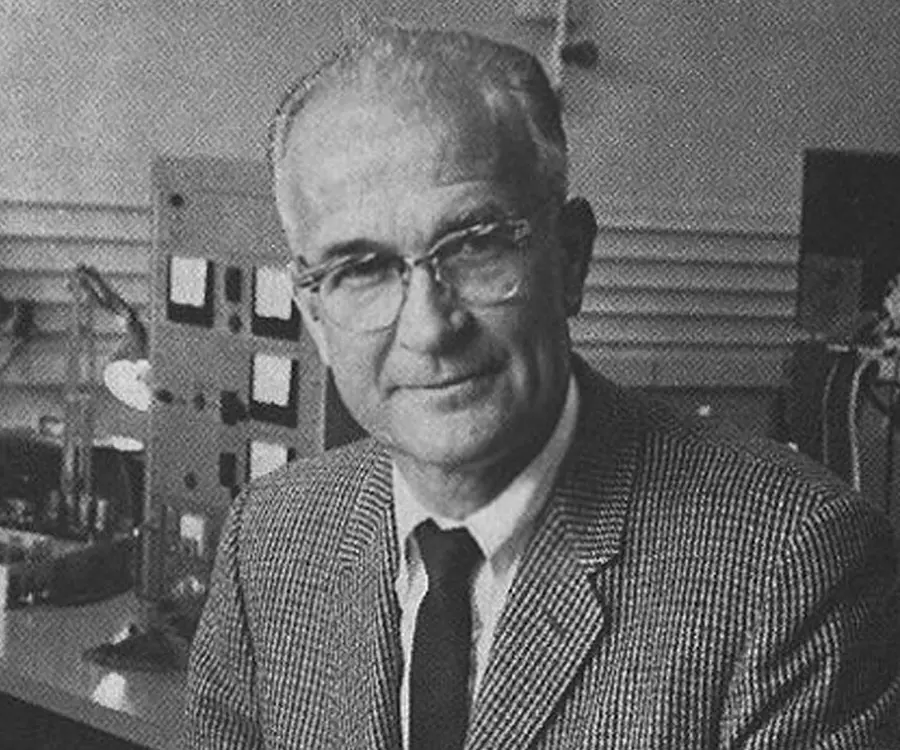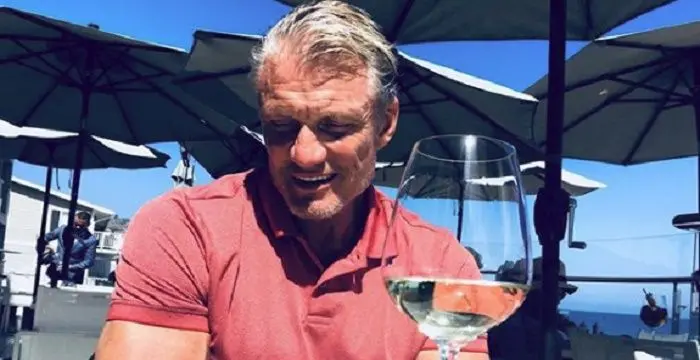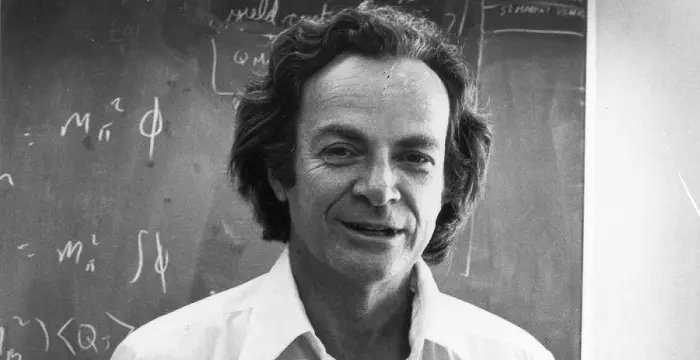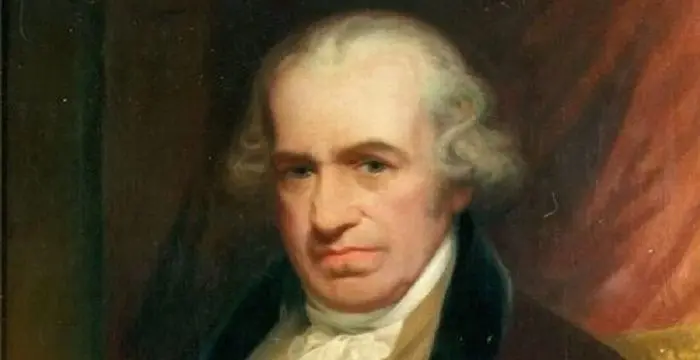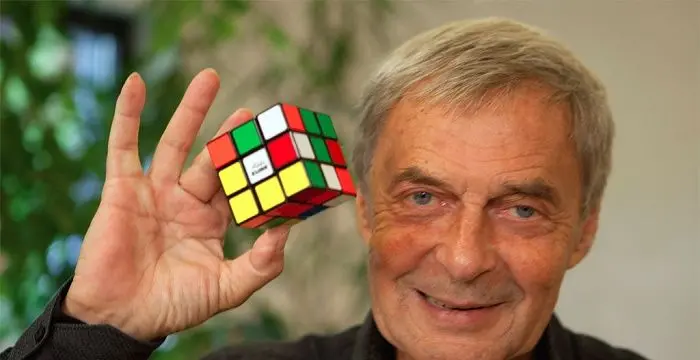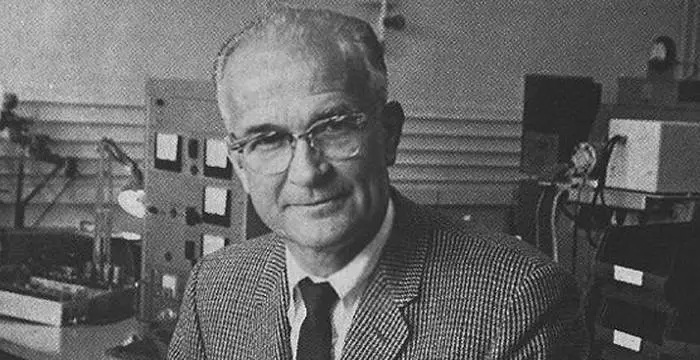
William Shockley - Massachusetts Institute Of Technology, Birthday and Childhood
William Shockley's Personal Details
William Shockley was an American physicist and inventor
| Information | Detail |
|---|---|
| Birthday | February 13, 1910 |
| Died on | August 12, 1989 |
| Nationality | American |
| Famous | Massachusetts Institute Of Technology, Inventors & Discoverers, Physicists |
| Spouses | Emmy Lanning, Jean Bailey |
| Known as | William Bradford Shockley, William Bradford Shockley Jr. |
| Universities |
|
| Notable Alumnis |
|
| Founder / Co-Founder |
|
| Discoveries / Inventions |
|
| Birth Place | Greater London, England, United Kingdom |
| Religion | Atheism |
| Gender | Male |
| Father | William Hillman Shockley |
| Mother | Mary |
| Sun Sign | Aquarius |
| Born in | Greater London, England, United Kingdom |
| Famous as | Physicist |
| Died at Age | 79 |
// Famous Physicists
Henry Cavendish
Henry Cavendish was a theoretical chemist and physicist, renowned for discovery of hydrogen and calculation of the mass of earth. To know more about his childhood, profile, timeline and career read on
Walter Kohn
Nobel Laureate Walter Kohn was an Austrian-born American theoretical chemist and physicist. Check out this biography to know about his childhood, life, achievements, works & timeline.
Nikola Tesla
Nikola Tesla was a Serbian-American inventor, best known for his development of alternating current electrical systems. This biography of Nikola Tesla provides detailed information about his childhood, life, achievements, works & timeline.
William Shockley's photo
Who is William Shockley?
William Shockley was an American physicist and inventor. His study of semiconductors earned him a Nobel Prize in Physics along with John Bardeen and Walter Brattain. A graduate of California Institute of Technology and the Massachusetts Institute of Technology, he worked at Bell Labs for a considerable amount of time to work on what would become his making. He headed numerous research teams and worked on many notable scientific studies. During the latter part of his life, Shockley dabbled in eugenics. His studies and theories of black inferiority made him an academic pariah. His personal life was marred by estrangement. His children from his first marriage,whom he barely spoke to during his lifetime, did not even attend his funeral when he passed away. His long-term companion was his second wife, Emmy. His extreme mood swings and stubborn nature took away the essence of what made him a great scientist and left him a man whose legacy lived on in his work and not as a human being.
// Famous Massachusetts Institute Of Technology
Dolph Lundgren
Dolph Lundgren is a famous Swedish actor, film-maker, screenwriter and martial artist. This biography offers detailed information about his childhood, family, personal life, etc.
Joseph E. Stiglitz
Joseph E. Stiglitz is a Nobel Prize winning American economist. Check out this biography to know about his childhood, family life, achievements and other facts related to his life.
Richard Feynman
Richard Feynman was a Nobel Prize winning American physicist who proposed the theory of quantum electrodynamics. To know more about his childhood, career, profile and timeline read on
Childhood & Early Life
William Bradford Shockley Jr. was born on February 13, 1910, in London, England. His father, William Hillman Shockley was a mining engineer and his mother, Mary Bradford was the first female US Deputy mining surveyor. His parents were American and he grew up in Palo Alto, California from age 3.
Shockley studied at the California Institute of Technology and received his Bachelors of Science in 1932.
He studied for his Ph.D. at the Massachusetts Institute of Technology under Professor J.C. Slater. His thesis was on the energy band structure of Sodium Chloride. He received his doctorate in 1936. The same year, he joined Bell Labs in New Jersey and began research on semiconductors. The research group was headed by Clinton Davisson. He wrote many fundamental papers and had them published in “Physical Review”.
Career
At Bell Labs, Shockley was involved in radar research. This was when World War II broke out. During the war, in May 1942, he served as the director of research for the U.S. Navy's Antisubmarine Warfare Operations Research Group.
In 1944, he organized a training program for B-29 bomber pilots and took tours around the world to analyze results. The training involved the usage of new radar bomb sights. For this, he was awarded the “Medal for Merit” on October 17, 1946.
He was asked to prepare a report on the casualties from Japan’s invasion in July 1945 by the War Department. His report laid the foundation for the Hiroshima and Nagasaki bombings and Japan’s eventual surrender.
In 1945, after the war ended, he was invited to form a solid state group involving Stanley Morgan, John Bardeen, Walter Brattain, Gerald Pearson, Robert Gibney, and Hilbert Moore. They were handed the responsibility of finding a solid-state alternative to glass vacuum tubes. After many failures and attempts, the group was able to submit a paper on their findings in 1946.
Shockley, Bardeen, and Brattain invented the point-contact transistor in 1947 which replaced traditional bulky transistors. This work earned them the Nobel Prize in Physics.
He published a 558-page treatise, ‘Electrons and Holes in Semiconductors’, a collection of his research and work in 1950. This would go on to become a reference for other scientists working on the development of semiconductors and their variants.
He invented the junction transistor in 1951 and announced his invention at a press conference on July 4 of that year. The same year, he was elected a member of “National Academy of Sciences” (NAS), a post that was too high for someone as young as 41. He received the “Comstock Prize” in 1953 from the NAS as well as many other honors.
He moved to Mountain View in California in 1956 and set up the “Shockley Semiconductor Laboratory”. After his Nobel victory, he became paranoid and autocratic forcing 8 colleagues at his lab to resign. These 8 went on to form the “Fairchild Semiconductor” without him.
He was appointed to the President's Scientific Advisory Committee in 1962. In 1963, he received the Holley Medal of the American Society of Mechanical Engineers.
During the 1960s he actively started questioning the intellectual differences between races. Many of his shocking proposals included paid sterilization of individuals with IQ below 100 and stated that a high rate of reproduction among blacks was retrogressive.
He was appointed the first Alexander M. Poniatoff professor of engineering science in 1963 at Stanford University, a promotion from being a lecturer when he joined in 1958. He remained in this position until his retirement in 1975.
Major Works
Shockley’s “point-contact transistor” was a major influence in helping usher an age of micro-miniature electronics. He managed a research team that consisted of himself, John Bardeen, and Walter H. Brattain and used semiconductors to amplify electronic signals. The transistor was further improved which replaced the bulky and less-efficient vacuum tubes.
Awards & Achievements
His crowning glory was the “Nobel Prize for Physics” in 1956. It was awarded to him for the invention of the “point-contact transistor” in 1947. He was the co-recipient of the award along with his colleagues John Bardeen and Walter Brattain.
He had to his name over 90 US patents, the first of which was the “Electron Discharge Device" on electron multipliers.
His contribution to science earned him many honors and medals. The Institute of Radio Engineers (now, Institute of Electrical and Electronics Engineers, IEEE) awarded him the Maurice Liebman Memorial Prize in 1980.
Personal Life & Legacy
At the age of 23, he married Jean Alberta Bailey from Iowa in August 1933. In March 1934 they had their first child, Alison. Later the couple divorced.
He married Emmy Lanning, a psychiatric nurse, later. She outlived him by 18 years and passed away on April 28, 2007.
He was an accomplished climber and made many hikes and climbs in the “Shawangunks” in the Hudson River Valley. A route there is named “Shockley’s Ceiling”. He was an amateur magician, speaker, as well as lecturer.
He passed away on August 12, 1989, due to prostate cancer. He was estranged from his friends and family and his children came to know about his death through media. His resting place is “Alta Mesa Memorial Park” in Palo Alto, California.
Trivia
Though his most significant work included semiconductors, he considered genetics his primary field.
He was a sperm donor at the infamous “Repository for Germinal Choice”, popularly known as “The Nobel Prize sperm bank”. He was the only one to publicly acknowledge his contribution to the bank.
He was home-schooled until the age of 8. This was because his parents thought they could provide an education better than any school. Another reason could have been that they often moved from one place to another.
As a child, he was quite ill-tempered and spoiled; traits he inherited from his parents. But he also possessed a funny bone and was a practical joker in college.
// Famous Inventors & Discoverers
Nikola Tesla
Nikola Tesla was a Serbian-American inventor, best known for his development of alternating current electrical systems. This biography of Nikola Tesla provides detailed information about his childhood, life, achievements, works & timeline.
Thomas Newcomen
Thomas Newcomen was a British inventor who developed the world’s first steam engine. Browse through this biography to learn in details about his life, career, works and timeline.
Erno Rubik
The famous inventor and educationist, Erno Rubik is known world-wide for his invention the ‘Rubik’s Cube’. To know more about the childhood, profile, timeline and career of this famous architect-inventor read on.
William Shockley's awards
| Year | Name | Award |
|---|---|---|
Other | ||
| 0 | Wilheln Exner Medal (1963) | |
| 0 | IEEE Medal of Honor (1980) | |
| 0 | Nobel Prize in Physics (1956) | |
| 0 | Comstock Prize in Physics (1953) | |
| 0 | Oliver E. Buckley Condensed Matter Prize (1953) | |
William Shockley biography timelines
- // 13th Feb 1910William Bradford Shockley Jr. was born on February 13, 1910, in London, England. His father, William Hillman Shockley was a mining engineer and his mother, Mary Bradford was the first female US Deputy mining surveyor. His parents were American and he grew up in Palo Alto, California from age 3.
- // 1932Shockley studied at the California Institute of Technology and received his Bachelors of Science in 1932.
- // Aug 1933At the age of 23, he married Jean Alberta Bailey from Iowa in August 1933. In March 1934 they had their first child, Alison. Later the couple divorced.
- // 1936He studied for his Ph.D. at the Massachusetts Institute of Technology under Professor J.C. Slater. His thesis was on the energy band structure of Sodium Chloride. He received his doctorate in 1936. The same year, he joined Bell Labs in New Jersey and began research on semiconductors. The research group was headed by Clinton Davisson. He wrote many fundamental papers and had them published in “Physical Review”.
- // May 1942At Bell Labs, Shockley was involved in radar research. This was when World War II broke out. During the war, in May 1942, he served as the director of research for the U.S. Navy's Antisubmarine Warfare Operations Research Group.
- // 1944 To 17th Oct 1946In 1944, he organized a training program for B-29 bomber pilots and took tours around the world to analyze results. The training involved the usage of new radar bomb sights. For this, he was awarded the “Medal for Merit” on October 17, 1946.
- // 1945 To 1946In 1945, after the war ended, he was invited to form a solid state group involving Stanley Morgan, John Bardeen, Walter Brattain, Gerald Pearson, Robert Gibney, and Hilbert Moore. They were handed the responsibility of finding a solid-state alternative to glass vacuum tubes. After many failures and attempts, the group was able to submit a paper on their findings in 1946.
- // Jul 1945He was asked to prepare a report on the casualties from Japan’s invasion in July 1945 by the War Department. His report laid the foundation for the Hiroshima and Nagasaki bombings and Japan’s eventual surrender.
- // 1947Shockley, Bardeen, and Brattain invented the point-contact transistor in 1947 which replaced traditional bulky transistors. This work earned them the Nobel Prize in Physics.
- // 1947 To 1956His crowning glory was the “Nobel Prize for Physics” in 1956. It was awarded to him for the invention of the “point-contact transistor” in 1947. He was the co-recipient of the award along with his colleagues John Bardeen and Walter Brattain.
- // 1950He published a 558-page treatise, ‘Electrons and Holes in Semiconductors’, a collection of his research and work in 1950. This would go on to become a reference for other scientists working on the development of semiconductors and their variants.
- // 1951 To 1953He invented the junction transistor in 1951 and announced his invention at a press conference on July 4 of that year. The same year, he was elected a member of “National Academy of Sciences” (NAS), a post that was too high for someone as young as 41. He received the “Comstock Prize” in 1953 from the NAS as well as many other honors.
- // 1956He moved to Mountain View in California in 1956 and set up the “Shockley Semiconductor Laboratory”. After his Nobel victory, he became paranoid and autocratic forcing 8 colleagues at his lab to resign. These 8 went on to form the “Fairchild Semiconductor” without him.
- // 1962 To 1963He was appointed to the President's Scientific Advisory Committee in 1962. In 1963, he received the Holley Medal of the American Society of Mechanical Engineers.
- // 1980His contribution to science earned him many honors and medals. The Institute of Radio Engineers (now, Institute of Electrical and Electronics Engineers, IEEE) awarded him the Maurice Liebman Memorial Prize in 1980.
- // 12th Aug 1989He passed away on August 12, 1989, due to prostate cancer. He was estranged from his friends and family and his children came to know about his death through media. His resting place is “Alta Mesa Memorial Park” in Palo Alto, California.
- // 28th Apr 2007He married Emmy Lanning, a psychiatric nurse, later. She outlived him by 18 years and passed away on April 28, 2007.
// Famous American peoples
Wentworth Miller
Wentworth Miller is an American actor and screenwriter who achieved recognition for his role in the TV series ‘Prison Break’.
Jason Simpson
Jason Simpson is the son of former NFL running back, broadcaster and actor O. J. Simpson. Check out this biography to know about his childhood, family, life, and little known facts about him.
Melissa Brim
Melissa Brim is the ex-girlfriend of former professional boxer Floyd Mayweather Jr. Check out this biography to know about her birthday, childhood, family life, achievements and fun facts about her.
Skai Jackson
Skai Jackson is an American child actress with huge fan following. Find more about her family & personal life, relationships, facts and more.
Joyce Meyer
Joyce Meyer is a Christian author and speaker. This biography provides detailed information about her childhood, life, achievements, works & timeline
Zoe LaVerne
Zoe LaVerne is an American musical.ly star. Check out this biography to know more about her family, personal life, including her age, birthday, etc.
William Shockley's FAQ
What is William Shockley birthday?
William Shockley was born at 1910-02-13
When was William Shockley died?
William Shockley was died at 1989-08-12
Where was William Shockley died?
William Shockley was died in Stanford
Which age was William Shockley died?
William Shockley was died at age 79
Where is William Shockley's birth place?
William Shockley was born in Greater London, England, United Kingdom
What is William Shockley nationalities?
William Shockley's nationalities is American
Who is William Shockley spouses?
William Shockley's spouses is Emmy Lanning, Jean Bailey
What was William Shockley universities?
William Shockley studied at Massachusetts Institute Of Technology (MIT), Massachusetts Institute of Technology, California Institute of Technology
What was William Shockley notable alumnis?
William Shockley's notable alumnis is Massachusetts Institute Of Technology (MIT)
Which company or organization was founded by William Shockley?
William Shockley was the founder/co-founder of Shockley Semiconductor Laboratory
What is William Shockley's inventions/discoveries?
Transistor was invented (or discovered) by William Shockley
What is William Shockley's religion?
William Shockley's religion is Atheism
Who is William Shockley's father?
William Shockley's father is William Hillman Shockley
Who is William Shockley's mother?
William Shockley's mother is Mary
What is William Shockley's sun sign?
William Shockley is Aquarius
How famous is William Shockley?
William Shockley is famouse as Physicist



